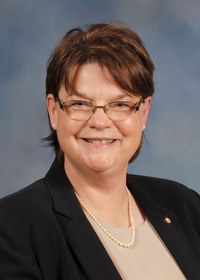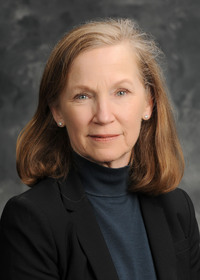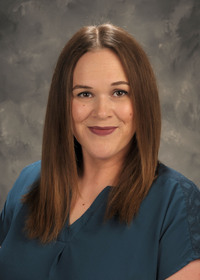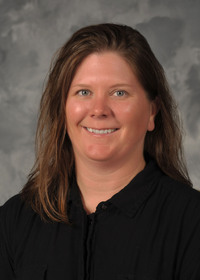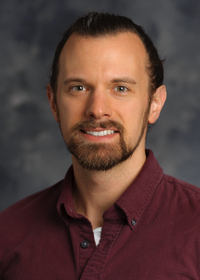Information Possibly Outdated
The information presented on this page was originally released on April 5, 2012. It may not be outdated, but please search our site for more current information. If you plan to quote or reference this information in a publication, please check with the Extension specialist or author before proceeding.
Build strong bones to prevent osteoporosis
MISSISSIPPI STATE -- A glass of milk may not look like preventive medicine, but daily calcium intake can build strong bones that are less likely to break.
“Osteoporosis is a loss of bone density to the point where fractures occur earlier and more easily. While more prevalent in women, men can also have osteoporosis,” said Diane Tidwell, associate professor in Mississippi State University’s Department of Food Science, Nutrition and Health Promotion. “As the baby boomers get older, we’ll see a lot more osteoporosis, simply because our society is aging.”
Tidwell said the irony of osteoporosis is that while it is considered a disease that impacts only older people, diet and physical activity in one’s younger years can greatly effect to bone health. Proper nutrition and exercise habits can benefit both short- and long-term health in many ways, including building strong bones, maintaining weight, improving cardiovascular health and preventing diseases.
“If you’ve built up good bones as a young adult, your chances of developing osteoporosis are low,” Tidwell said. “Nutritionally, dairy products, fortified cereals, green leafy vegetables and cold water fish such as salmon all contain calcium, a key component to building healthy bones.
“Vitamin D is the second key factor in bone health, because it helps the body absorb calcium. Sunlight helps your body produce vitamin D, and most experts say 10 to 15 minutes of exposure to sunlight, before 11 a.m. and after 3 p.m., three to four times per week is a good way to get vitamin D,” she said.
Risk factors for the disease include causes beyond an individual’s control, such as genetics, specifically the maternal family history of the disease and ethnicity. Caucasians, Asians and Hispanics are at a higher risk than African Americans or those of African heritage, Tidwell said. Stress, certain medications and being small-framed also play a role.
But many of the factors depend on individual choice.
“Smoking and overuse of alcohol are risk factors, as both interfere with bone development,” she said. “Being sedentary, a long-term diet inadequate in calcium and vitamin D, and estrogen deficiency all decrease bone health.
“The eating disorder anorexia nervosa sets up a person for malnutrition and poor bone health. People who are not taking in enough nutrients to build up their bone mass will lose calcium faster than others. Not everyone will develop osteoporosis, but all elderly people experience some bone loss. Early nutritional choices influence bone loss later in life,” she said.
Tidwell said weight-bearing exercise is very important for building up healthy bones.
“Swimming is a great exercise, but it’s not weight-bearing,” she said. “Walking is good. Anything that puts weight on your bones helps with bone density.”
Beverly Brimer, an MSU employee, discovered the challenges of living with osteoporosis after she fell over a year ago.
“For years I’d had different symptoms of osteoporosis, but no one put together the clues to diagnose the disease,” she said. “I fell and ended up with several fractures – I broke my arm and wrist and fractured my back. That’s when I was diagnosed with osteoporosis, and my life hasn’t been the same since.”
Brimer described herself as being known for a healthy lifestyle that included walking, hiking and nutritious meals and excluded smoking and drinking alcohol. But after her diagnosis, she studied what could help her rebuild her bones as much as possible, and she revolutionized her diet and lifestyle.
“I try to get a lot more calcium through my food – I eat more for nutrition than for weight control,” she said. “I want to make sure I get in all the nutrients I need every day. I have to exercise differently – I walk, use light weights for my upper body, and I’m not supposed to do any bending. I’m more cautious. From the shoes I wear to the places I go, my lifestyle revolves around my diagnosis.”
Brimer’s research has led her to be passionate about educating others about osteoporosis.
“I tell people, ‘You’d better start making deposits into your health bank account early!’ You build the majority of your bone by the time you’re in your 20s. You want to have a nice supply of bone strength before you start to lose it. Invest in your health, especially when you’re young, because you’ll appreciate it when you get older,” she said.
Looking back, Brimer said she wishes she had trusted her instincts more and gotten a second opinion.
“Listen to your body. If you can’t get one doctor to listen to you, get another opinion. Get a bone scan when you’re 50, even if it’s just for a baseline reading. Don’t wait until you are breaking bones to take bone health seriously, and don’t think taking a pill is the solution. Treat your whole body. Be proactive.”


